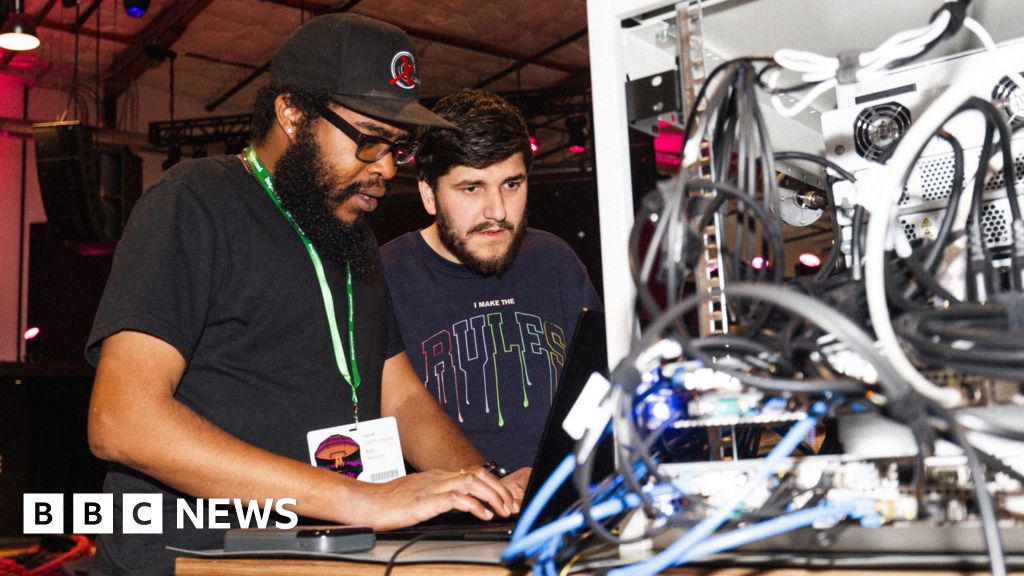The world is betting heavily on carbon capture — a term that refers to various techniques to stop carbon pollution from being released during industrial processes, or removing existing carbon from the atmosphere, to then lock it up permanently.
The practice is not free of controversy, with some arguing that carbon capture is expensive, unproven and can serve as a distraction from actually reducing carbon emissions. But it is a fast-growing reality: there are at least 628 carbon capture and storage projects in the pipeline around the world, with a 60% year-on-year increase, according to the latest report from the Global CCS (Carbon Capture and Storage) Institute. The market size was just over $3.5 billion in 2024, but is projected to grow to $14.5 billion by 2032, according to Fortune Business Insights.
Perhaps the most ambitious — and the most expensive — type of carbon capture involves removing carbon dioxide (CO2) directly from the air, although there are just a few such facilities currently in operation worldwide. Some scientists believe that a better option would be to capture carbon from seawater rather than air, because the ocean is the planet’s largest carbon sink, absorbing 25% of all carbon dioxide emissions.
In the UK, where the government in 2023 announced up to £20 billion ($26.7 billion) in funding to support carbon capture, one such project has taken shape near the English Channel. Called SeaCURE, it aims to find out if sea carbon capture actually works, and if it can be competitive with its air counterpart.
“The reason why sea water holds so much carbon is that when you put CO2 into the water, 99% of it becomes other forms of dissolved carbon that don’t exchange with the atmosphere,” says Paul Halloran, a professor of Ocean and Climate Science at the University of Exeter, who leads the SeaCURE team.
“But it also means it’s very straightforward to take that carbon out of the water.”
Pilot plant
SeaCURE started building a pilot plant about a year ago, at the Weymouth Sea Life Centre on the southern coast of England. Operational for the past few months, it is designed to process 3,000 liters of seawater per minute and remove an estimated 100 tons of CO2 per year.
“We wanted to test the technology in the real environment with real sea water, to identify what problems you hit,” says Halloran, adding that working at a large public aquarium helps because it already has infrastructure to extract seawater and then discharge it back into the ocean.
The carbon that is naturally dissolved in the seawater can be easily converted to CO2 by slightly increasing the acidity of the water. To make it come out, the water is trickled over a large surface area with air blowing over it. “In that process, we can constrict over 90% of the carbon out of that water,” Halloran says.
The SeaCURE pilot plant - Paul Halloran and SeaCURE Team
The CO2 that is extracted from the water is run through a purification process that uses activated carbon in the form of charred coconut husks, and is then ready to be stored. In a scaled up system, it would be fed into geological CO2 storage. Before the water is released, its acidity is restored to normal levels, making it ready to absorb more carbon dioxide from the air.
“This discharged water that now has very low carbon concentrations needs to refill it, so it’s just trying to suck CO2 from anywhere, and it sucks it from the atmosphere,” says Halloran. “A simple analogy is that we’re squeezing out a sponge and putting it back.”
While more tests are needed to understand the full potential of the technology, Halloran admits that it doesn’t “blow direct air capture out the water in terms of the energy costs,” and there are other challenges such as having to remove impurities from the water before releasing it, as well as the potential impact on ecosystems. But, he adds, all carbon capture technologies incur high costs in building plants and infrastructure, and using seawater has one clear advantage: It has a much higher concentration of carbon than air does, “so you should be able to really reduce the capital costs involved in building the plants.”
Mitigating impacts
One major concern with any system that captures carbon from seawater is the impact of the discharged water on marine ecosystems. Guy Hooper, a PhD researcher at the University of Exeter, who’s working on this issue at the SeaCURE site, says that low-carbon seawater is released in such small quantities that it is unlikely to have any effect on the marine environment, because it dilutes extremely quickly.
However, that doesn’t mean that SeaCURE is automatically safe. “To understand how a scaled-up version of SeaCURE might affect the marine environment, we have been conducting experiments to measure how marine organisms respond to low-carbon seawater,” he adds. “Initial results suggest that some marine organisms, such as plankton and mussels, may be affected when exposed to low-carbon seawater.”
To mitigate potential impacts, the seawater can be “pre-diluted” before releasing it into the marine environment, but Hooper warns that a SeaCURE system should not be deployed near any sensitive marine habitats.
There is rising interest in carbon capture from seawater — also known as Direct Ocean Capture or DOC — and several startups are operating in the field. Among them is Captura, a spin off from the California Institute of Technology that is working on a pilot project in Hawaii, and Amsterdam-based Brineworks, which says that its method is more cost-effective than air carbon capture.
According to Stuart Haszeldine, a professor of Carbon Capture and Storage at the University of Edinburgh, who’s not involved with SeaCURE, although the initiative appears to be more energy efficient than current air capture pilot tests, a full-scale system will require a supply of renewable energy and permanent storage of CO2 by compressing it to become a liquid and then injecting it into porous rocks deep underground.
He says the next challenge is for SeaCURE to scale up and “to operate for longer to prove it can capture millions of tons of CO2 each year.”
But he believes there is huge potential in recapturing carbon from ocean water. “Total carbon in seawater is about 50 times that in the atmosphere, and carbon can be resident in seawater for tens of thousands of years, causing acidification which damages the plankton and coral reef ecosystems. Removing carbon from the ocean is a giant task, but essential if the consequences of climate change are to be controlled,” he says.
For more CNN news and newsletters create an account at CNN.com
.png)
 German (DE)
German (DE)  English (US)
English (US)  Spanish (ES)
Spanish (ES)  French (FR)
French (FR)  Hindi (IN)
Hindi (IN)  Italian (IT)
Italian (IT)  Russian (RU)
Russian (RU) 








Comments